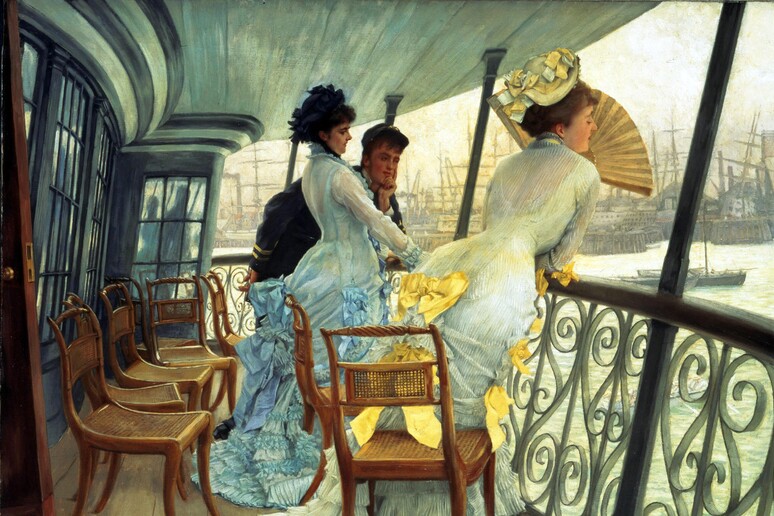Eighty artworks by French
artist James Tissot, who worked in the mid-1800s in Paris as a
genre painter of society life, are on display for the first time
in Italy at Rome's Chiostro del Bramante museum.
Tissot specialized in beautiful women immersed in flowering
gardens, in sumptuous gowns at the theatre or in ballrooms,
elegant and dynamic on holiday, accompanied by admirers, or
surrounded by children at festive picnics.
The 80 works on display are among the most important
created by Tissot, who was French by birth but British by
adoption.
He was able to capture the high society of his times, using
both impressionistic influences and pre-Raphaelite intimations,
and was celebrated in London as in Paris as an interpreter of
the international aristocracy of his times.
He portrayed the Victorian Age between the Industrial
Revolution and Colonialism, and was unsurpassed in his ability
to transform the everyday life of wealthy and idle ladies and
noblemen into adventures of a heroic bent that were sometimes
vaguely exotic.
Son of a cloth merchant father and a milliner mother (from
whom he inherited his passion for the details of fashion),
Jacques Joseph Tissot was born in Nantes in 1836 and died in
Buillon in 1902.
His artistic period coincides with that of Realism, which
developed in France in 1840, alongside Courbet, Daumier and
Millet.
In the beginning, his paintings were mostly historic and
displayed influences from the Dutch School.
Soon, however, Tissot changed the subject of his works to
focus on spaces and people from Parisian high society, mainly
thanks to his ability to masterfully portray feminine allure.
His depictions are so realistic that they make his
paintings seem like photos - the dress and accessories, rendered
abundantly and rich with detail, reveal the tastes of the
aristocracy and enshrine the status of the people immortalised
on the canvas.
Tissot explored this technique during his long residence in
London, after having left a Paris overwhelmed by the
Franco-Prussian War and subsequent siege of the city between
1870 and 1871.
An important meeting for Tissot in those years was his
encounter with Kathleen Newton, a beautiful Irish divorcée, who
became his muse and whom he depicted in many famous paintings,
especially his series on convalescence.
Newton contracted tuberculosis and died aged just 28, which
thew Tissot into a deep despair that he brought back to Paris
with him.
He returned there to immortalise the Parisian upper crust
in all its tedium and joys, from drawing rooms to ballrooms.
Another romantic disappointment, however, marked him to the
point that he fell into a true spiritual crisis, after which he
converted to Catholicism.
His conversion brought him to to travel for 10 years
through the Middle East and Palestine and spend the rest of his
life illustrating scenes from the Bible.
The exhibit James Tissot, curated by Cyrille Sciama, runs
through February 21, 2016.
ALL RIGHTS RESERVED © Copyright ANSA











